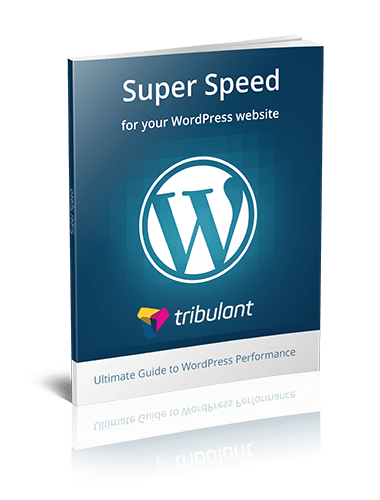SEO Strategy for B2B SaaS: Driving Results in 2024
As we step into 2024, the B2B SaaS SEO landscape continues to shift at a rapid pace, driven by ever-changing algorithms and evolving market dynamics. As such, understanding and taking advantage of search engine optimisation (SEO) is necessary for any business within this sector, no matter how big or small, to thrive.
Enhancing digital visibility, driving organic traffic, and boosting brand credibility are just some of the ways it can fuel growth. Interested? From keyword optimization to content strategy and technical considerations, keep reading to learn core strategies that are shaping the future of SEO for B2B SaaS companies.
Understanding Your B2B SaaS Audience
The basics of success in B2B SaaS is a deep understanding of your audience to discover who they are, what drives them, their challenges, and their goals. This entails delving deeply into the psyche of the decision-makers within businesses who are actively seeking the solutions that your SaaS product offers.
By speaking their language, answering their questions before they’re asked, and positioning your offering as the key to their challenges, you’re tailoring your SEO strategies to address their specific needs and pain points.
Keyword Research and Optimization
Targeted keyword research uncovers the exact terms and phrases that your prospective customers are entering to search for solutions like yours, backed by data and insights. Tools like Google Keyword Planner, SEMrush, or Ahrefs enable you to identify high-volume keywords as well as those niche terms that your competitors might overlook.
While long-tail keywords typically possess lower search volumes compared to more generic ones, they often result in higher conversion rates. This is because they are more specific and tend to align closely with user intent, making them highly effective for targeting niche demographics. According to Backlinko’s analysis of 306 million search terms, a staggering 91.8% of all queries are long-tail keywords.
Once you’ve found the right keywords, you need to focus on organically integrating them into your content while simultaneously avoiding overstuffing your pages. Not only does this approach help you rank higher in search engines, but it also resonates with your audience, offering them the answers they seek in a way they understand.
Content Strategy
In order to establish your brand as a thought leader in the SaaS space, you need stellar content that engages, informs, and converts your audience from leads to loyal customers. But what types of content captivate a B2B segment?
Opt for a blend of:
- In-depth blog posts
- Eye-opening case studies
- Comprehensive whitepapers
- Engaging videos
Each piece should offer value, whether it’s solving a problem, providing new insights, or showcasing your product’s unique benefits. According to a Content Marketing Institute study, 71% of B2B consumers prefer educational content that addresses their pain points.
With that said, it’s also important to balance educational content with promotional material that subtly guides your target market towards your services. This ensures they are being led from the awareness to the decision-making stage, with your SaaS solution positioned as their preferred choice.
On-Page SEO
On-page SEO is the first thing both your audience and search engines encounter, making it a crucial aspect of your strategy. The key elements here are titles, meta descriptions, and headers, with each playing a unique role in enhancing your site’s visibility and user experience.
Titles
These should be compelling enough to prompt a click yet descriptive enough to be search engine-friendly. A study by Moz indicates that headlines with a perfect balance of keywords and your brand name can improve click-through rates significantly.
Meta Descriptions
Although not a direct ranking element, they can still significantly improve the click-through rate (CTR) of your organic search results, driving more traffic to your site even if your ranking remains the same. For this reason, they should be concise, engaging, and informative, offering a snapshot of what the user can expect on the page.
Headers
They structure your content, allowing readers to navigate with ease and search engines to understand the hierarchy and suitability of your information. Google’s algorithms increasingly prioritize a well-structured page with clear H1, H2, and subsequent headers.
Technical SEO
Technical SEO comprises the structure and navigation of your site to ensure it is not visible, accessible and user-friendly. This clarity is crucial, as a study by Adobe found that 38% of users will stop engaging with a website if the layout is unattractive.
Moreover, with over 50% of global web traffic coming from smartphone devices, mobile optimization is a non-negotiable for providing users with a seamless experience.
Finally, in today’s digital age, where security is paramount, a secure website can establish trust and set you apart in the competitive B2B SaaS market. As such, implementing HTTPS protects your users’ data and also boosts your site’s credibility in the eyes of search engines and visitors alike.
Link Building
High-quality backlinks are a testament to the trustworthiness and relevance of your content. According to a study by Backlinko, websites with a high number of reputable backlinks rank higher in search engine results, underscoring the importance of this strategy.
This process requires persistence and creativity, involving reaching out to authoritative industry websites, guest blogging, and creating shareable content that naturally attracts links. However, it’s crucial to steer clear of black-hat SEO tactics, such as buying links or partaking in link farms.
These practices can cause penalties from search engines, damaging your site’s reputation and position. Instead, focus on building organic, authentic links that add value and serve your audience’s needs.
Local and International SEO
Local SEO is pivotal for enterprises aiming to establish a strong online presence in specific geographic areas to attract more business from local customers. This strategy is becoming increasingly important as Google reports that “near me” searches have seen exponential growth in recent years.
Conversely, international SEO broadens your reach, allowing you to tap into new markets and cater to a global audience. You should consider tailoring your website for different languages and cultures to ensure your content resonates across borders. In fact, a study by CSA Research found that 76% of online shoppers prefer to buy products with information in their native language.
For comprehensive support in this area, consider the expertise of a B2B SaaS marketing agency, which specializes in tailoring SEO strategies to diverse market needs.
Analytics and SEO Tools
A study by HubSpot revealed that 61% of marketers say improving SEO and growing their organic presence is their top inbound marketing priority. Therefore, regularly tracking and analyzing your results through tools like Google Analytics and SEMrush is important.
They offer invaluable insights into website traffic, user behavior, and keyword performance. This process can help you identify what’s working and what’s not, allowing you to fine-tune your strategies for maximum effectiveness.
Emerging SEO Trends and Future Outlook
B2B SaaS SEO is rapidly evolving, with emerging trends like voice search and Artificial Intelligence (AI) reshaping the landscape. Here’s a glimpse into what’s next:
Voice Search Optimization
Around 80% of voice searches are predicted to be conversational by 2024, diverging from traditional search methods. This shift demands a strategic pivot towards content that mirrors natural speech patterns and prioritizes long-tail keywords.
AI in SEO
AI is offering unprecedented insights into user behavior and intent, enabling more personalized, data-driven content strategies. As technology advances, it will continue to refine the way B2B SaaS companies connect with their audience.
Responsive and Adaptive SEO
The future of SEO is not just about reacting to changes but proactively adapting to them. B2B SaaS companies must be agile and ready to embrace new trends to maintain a competitive edge.
Conclusion
Following this exploration of SEO strategies for B2B SaaS in 2024, it’s clear that a data-driven approach is fundamental to achieving success. From meticulous keyword research to crafting engaging, informative content, and applying technical SEO, each element plays a pivotal role in sculpting your online presence.
What’s equally important is anticipating emerging trends and continuously evolving your tactics to meet the ever-changing digital demands. Ultimately, the goal is not only to reach the top of the search results but to connect, engage, and grow your audience in meaningful ways.
Earn Money by Referring People
Refer customers to us with your affiliate link and earn commission on sales from your link.



No comments yet